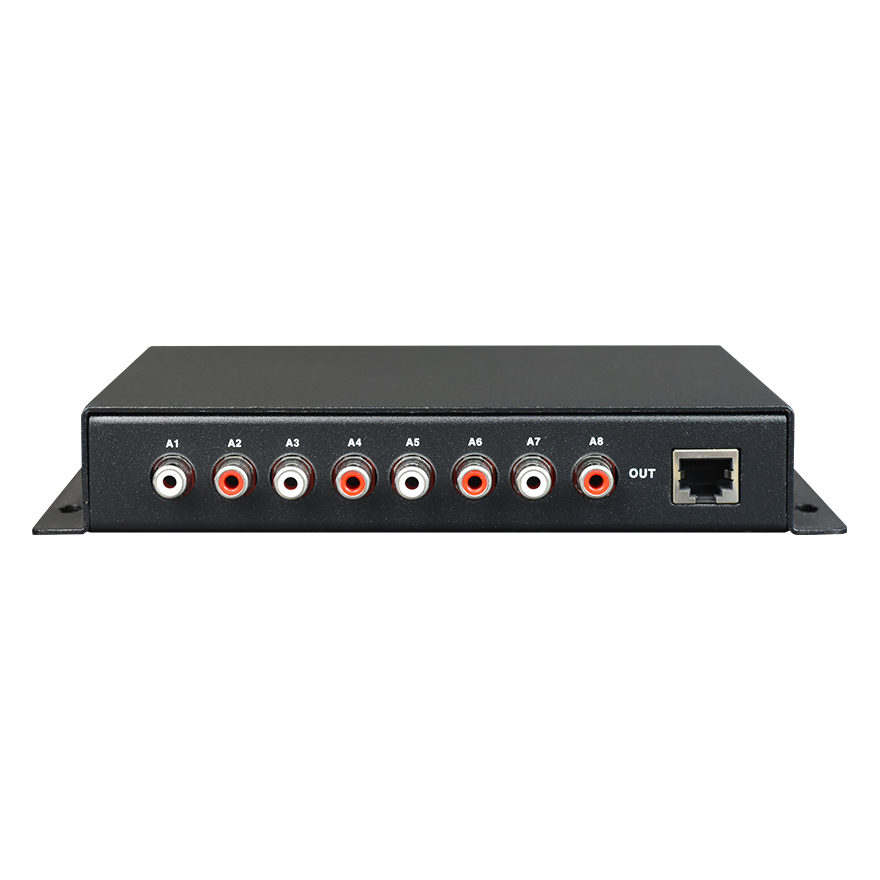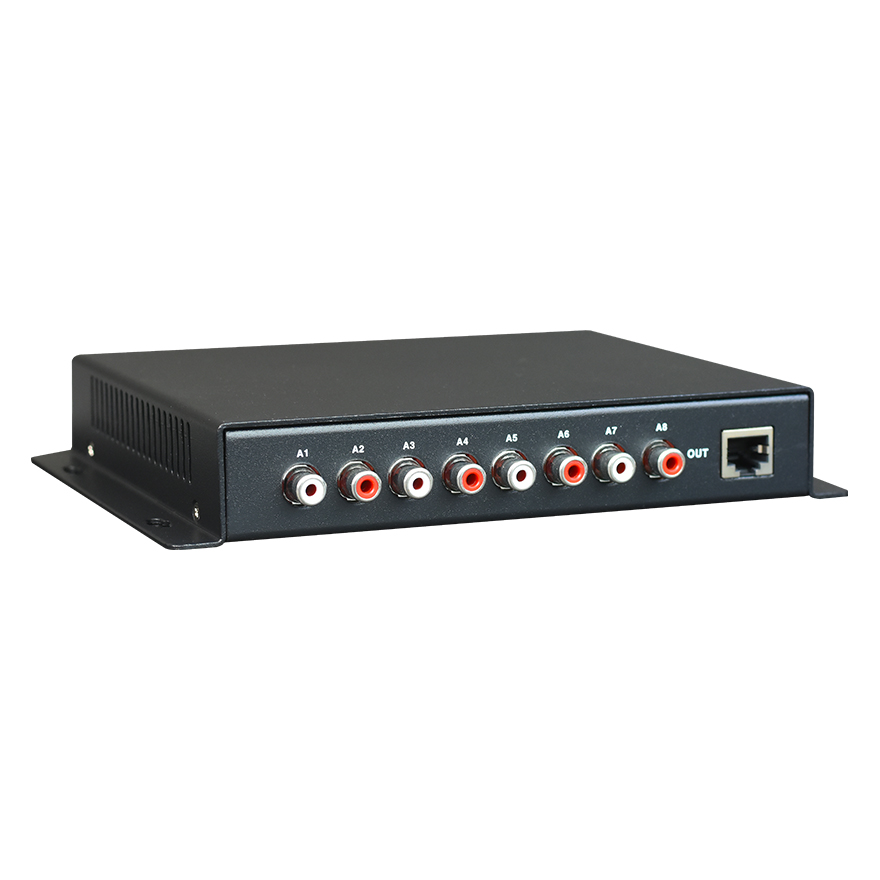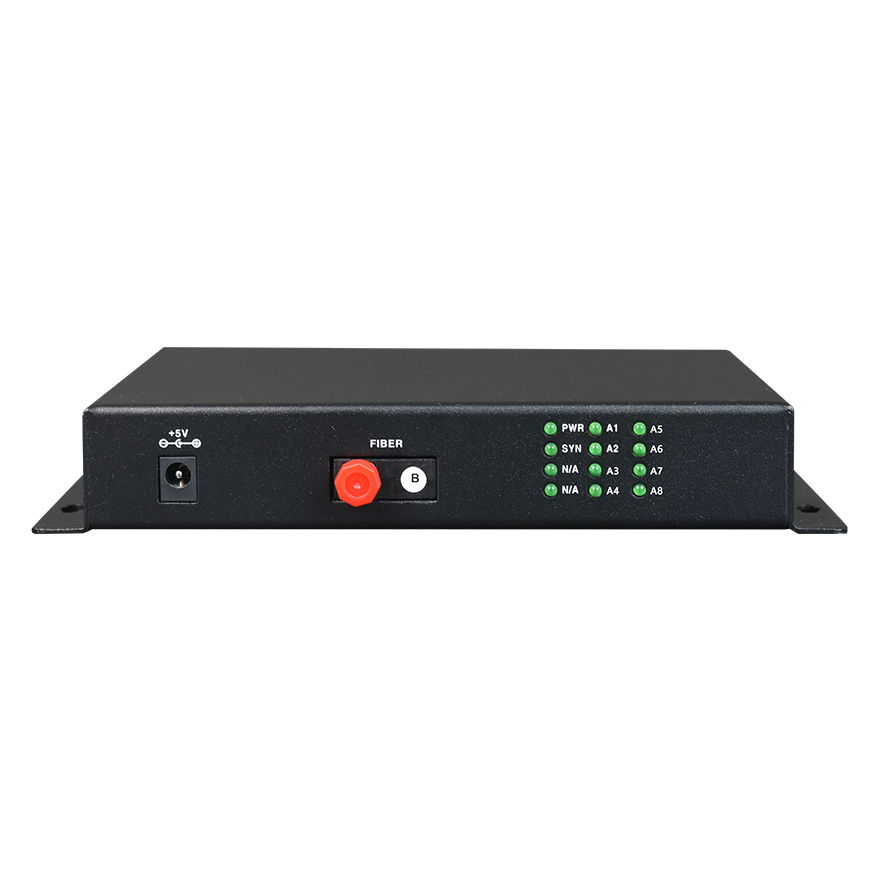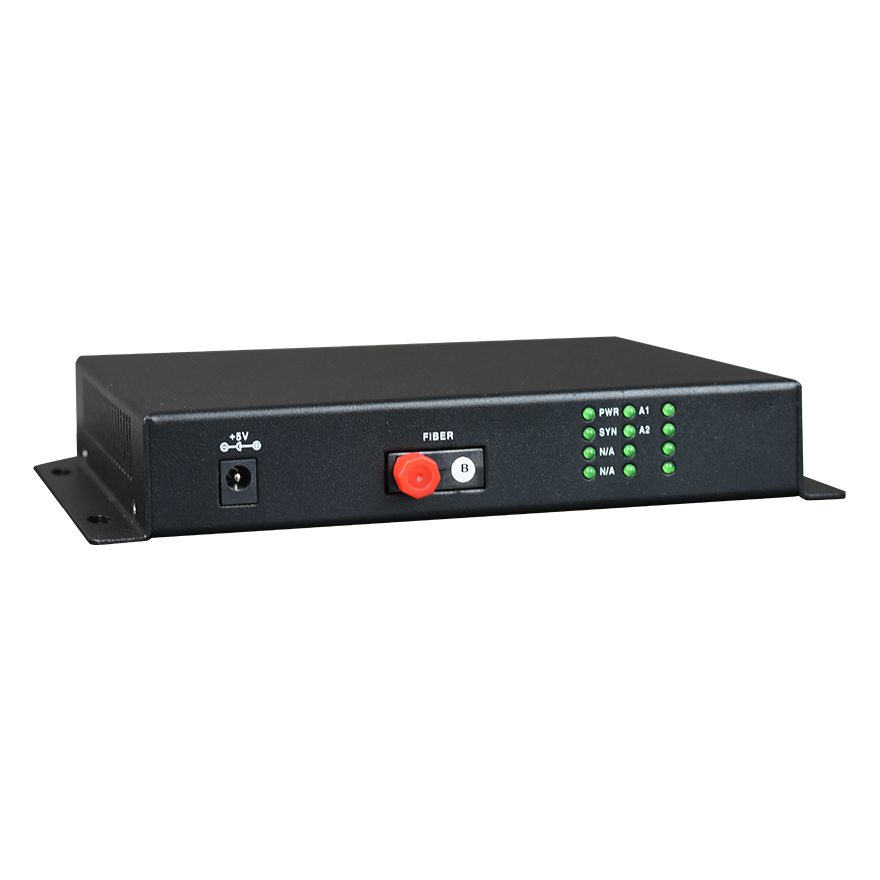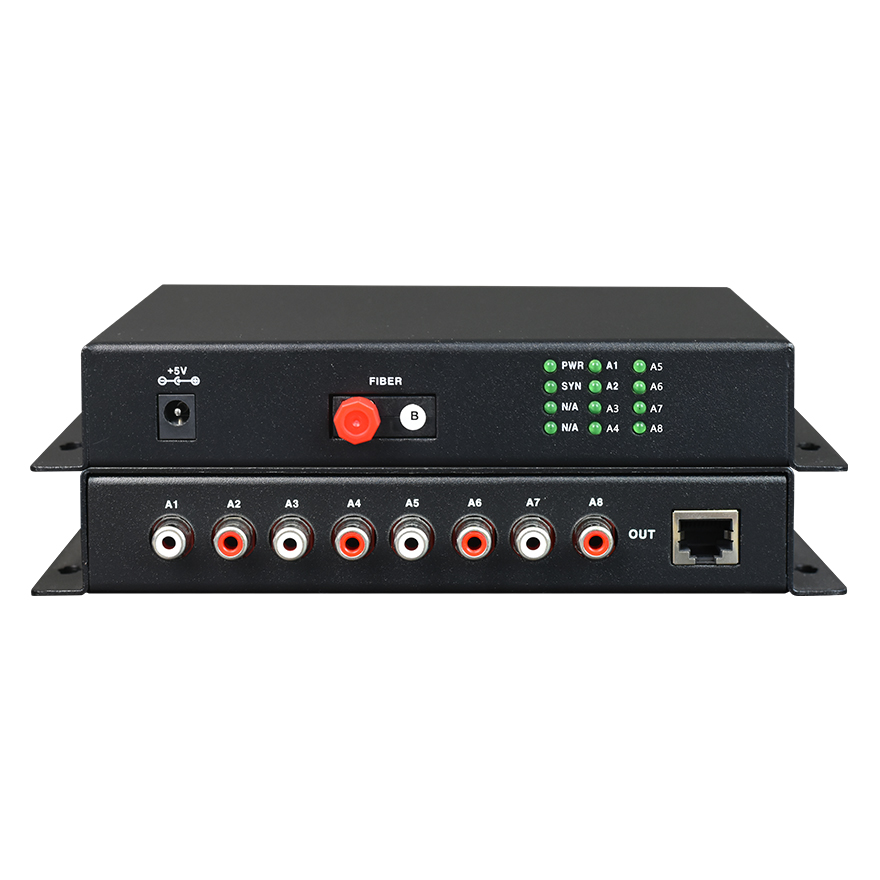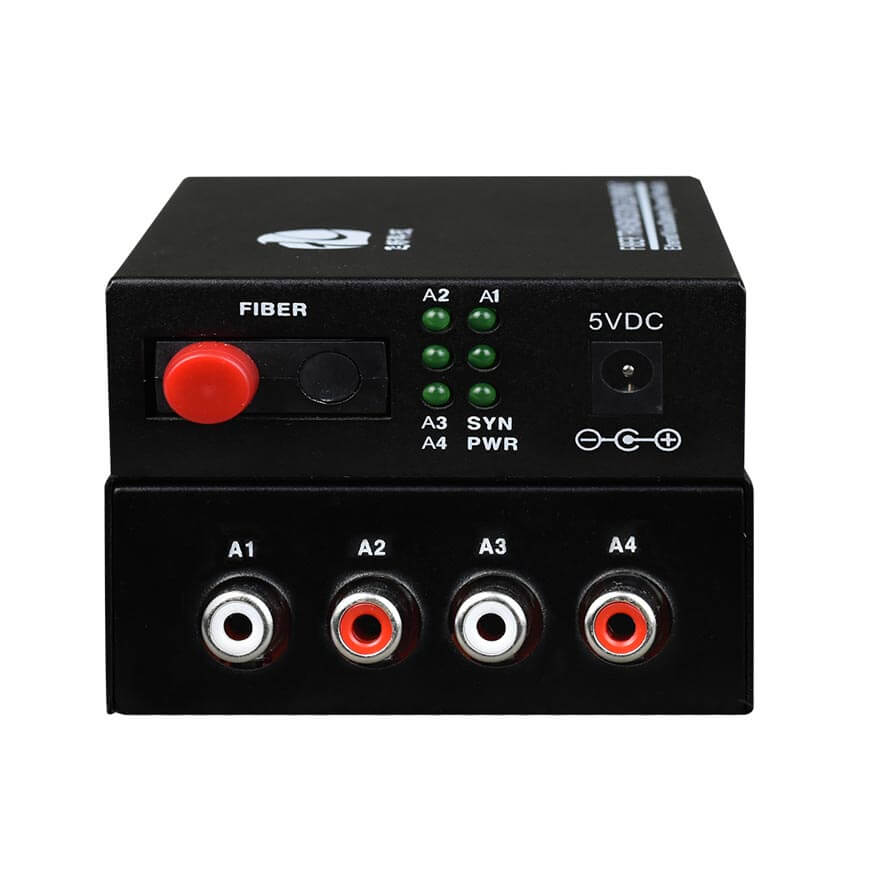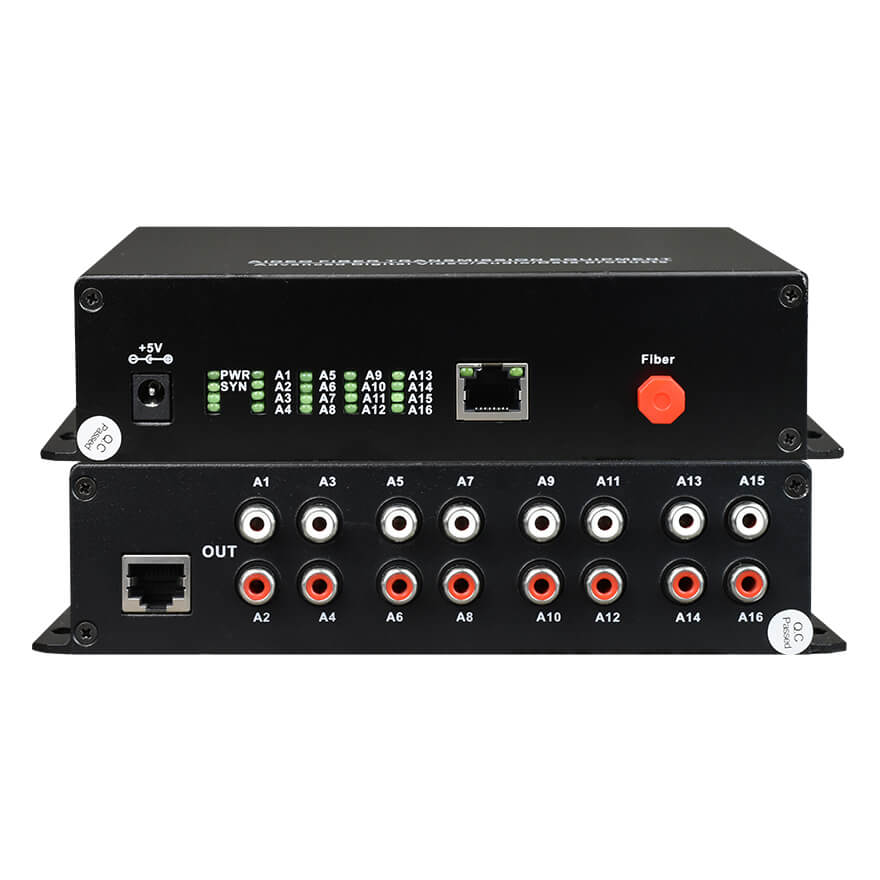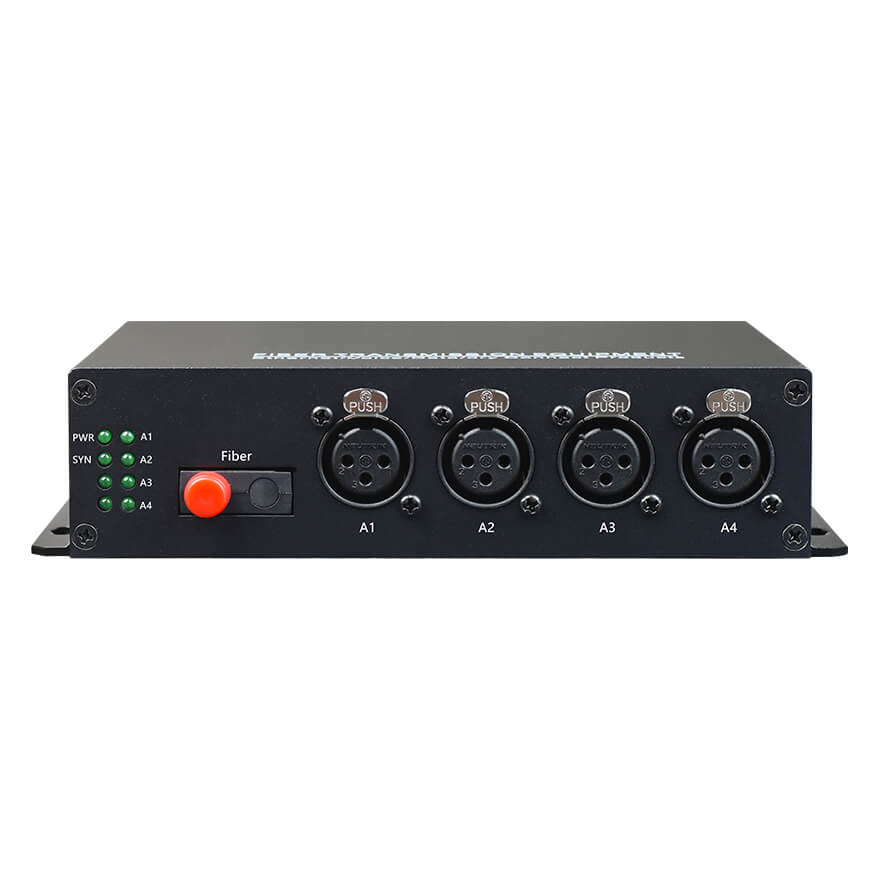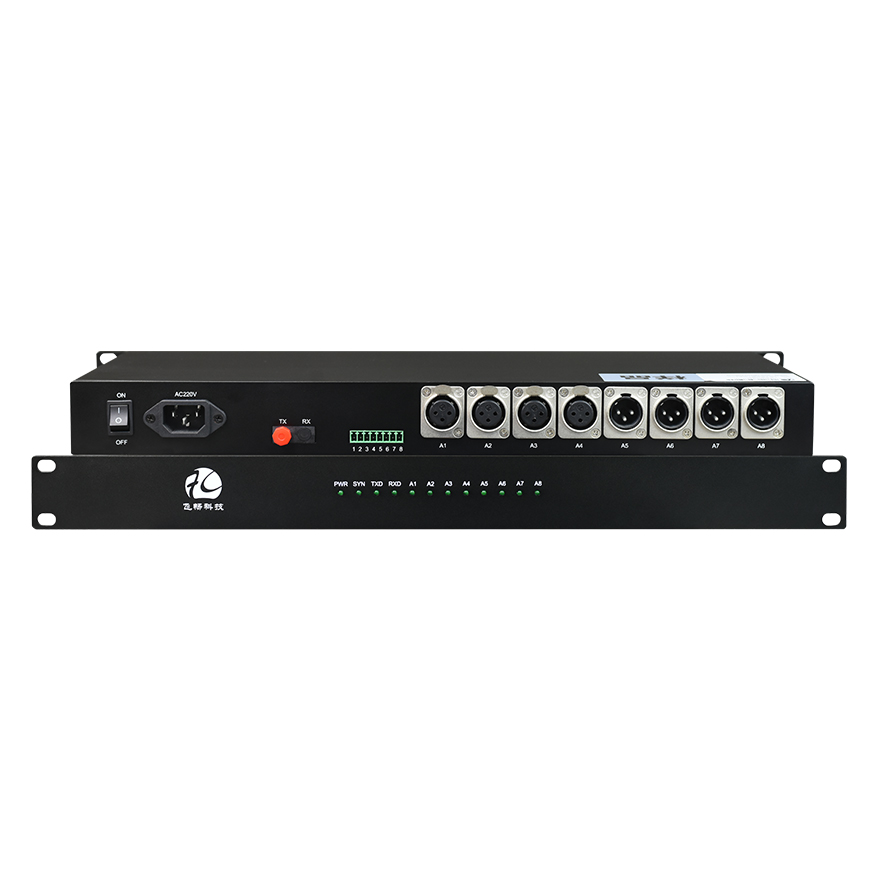● All-digital fiber optic transmission platform, the multi-service platform with a flexible configuration.
● The audio interface is RCA (phono), and the audio power supply is provided by a high-power toroidal transformer with +-18V power, offering a high dynamic range.
● The data and audio interfaces provide 3-level lightning protection, capable of passing the ITU-T K.21 (10/700 μS) common mode: 6KV impedance (40 Ω) test.
● It supports single-fiber transmission, with the option for dual-fiber configuration.
● It can detect the absence of fiber, indicating power loss or fiber breakage in the remote device.
● The audio component utilizes 24-bit AD/DA 128K sampling, guaranteeing professional-grade transmission quality.
● It supports bidirectional asynchronous data transmission (forward and reverse).
● The asynchronous data transmission rates range from 110 to 115.200 Kbps or higher.
● Asynchronous data can be RS232/RS485/RS422/Manchester code.



